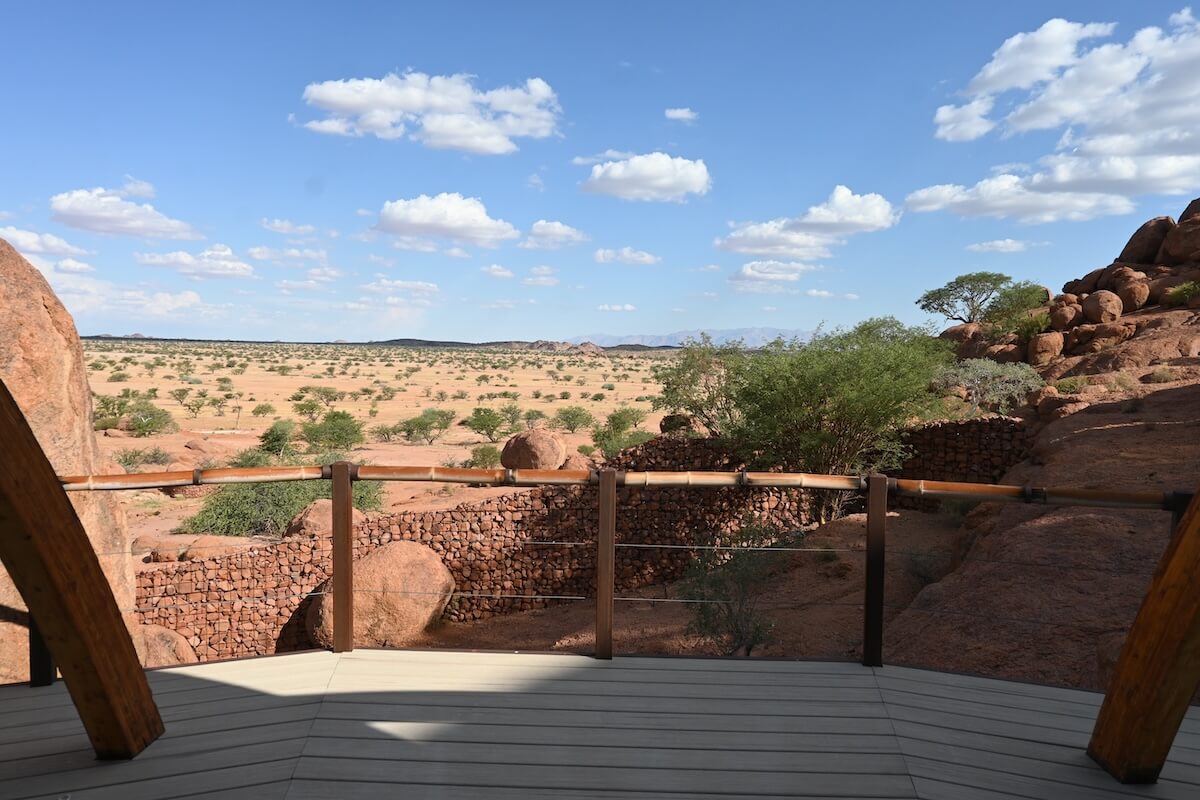As of this post, we are at a wonderful lodge, Onduli, near the famous Twyfelfontein rock engravings, taking a much needed break from camping for five nights.
I love Onduli, not only for its stunning food, wonderful staff, beautiful eco-architecture embedded in the desert boulders (all solar-powered and entirely removable at any time without leaving a trace), guided drives to the see the desert elephants and the few remaining desert-adapted black rhino, but I also love it for its conservation work in general and its work with the local communities. The lodge uses its proceeds to pay for university education for any child living in the conservancy, funded by proceeds from the lodge (this land is community owned, so there are many small settlements and villages around). All of the lodges under the umbrella of Ultimate Safaris, including Onduli, also fund the building of watering holes to keep elephants outside of the local settlements and away from the water drums of the residents. And they subsidize conservation work with the desert lions nearer Palmwag, Purros, the Hoanib River, and the Skeleton Coast areas. Onduli, where we are staying, delivers all of its food scraps to the local kraals for residents’ livestock. It’s an impressive effort to preserve and contribute. For guests at the lodge, there’s some satisfaction that the indulgence in the lodge has a benefit felt elsewhere. If you can stay at a lodge in Namibia, this is the one.
https://ultimatesafaris.na/our-retreats/signature-retreats/onduli-ridge





Yesterday, our guide, Imms, took us on a drive down the dry bed of the Aba Huab River. We found a small herd of desert elephants and watched them for what must have been more than an hour. They had a baby with them, maybe a month old. The elephants within the herd were scattered into small groups and we stopped and watched each. Imms gave us a mini-course in desert adaption (not to mention geology, but that’s another paragraph). With the heat and the scarcity of water, these elephants have changed in several ways from their more eastern and northern cousins. Not only do they rest more in the day’s shade to conserve energy, but they’ve developed longer legs to traverse the deep sand of the riverbeds and they have pouches within their throat that can store 5L of water for a quick cool off. They are smaller in size because there is less food and fewer nutrients. They have smaller tusks, and sadly they don’t live as long. Remarkably, they have learned over the thousands of years they’ve been in the desert not to destroy trees by knocking them over but, rather, to only harvest the leaves. They are also, given what we’ve seen, much calmer than other African elephants, or so it seems. Apparently they don’t have the memory and experience of poaching or the onslaught of loud cars or crowds of people, so they are less concerned about you and appear to feel less threatened. I was surprised by how calm they seemed, but the proof for me was seeing so many elephants just lie down near us and sleep. I’ve never seen elephants just lay down before! It was quite the sight! The bull we spent some time watching later, also didn’t seem bothered by our presence. When he wanted a bit more private time to himself, he let us know by giving a head shake as he cast off a bit of the dust. He seemed to know that we’d be on our way at that, which we were.








I should really put up an entirely separate post for the geology that Imms has taught me. I can just add here that I see the entire landscape differently now as I lookout and appreciate how old everything is here.
There are many other stories and pictures to post. Since we haven’t had much internet access, I have some catching up to do. I will backtrack and fill in the gaps soon. We have seen some amazing things and I want to share not only the geology I’ve learned in Namibia, but experiences like the thousands of buffalo we had grazing along the Chobe River and right through our campsite! It’s quite the experience to open the back door and look out to the buffalo grazing at the bush just outside. More soon!
